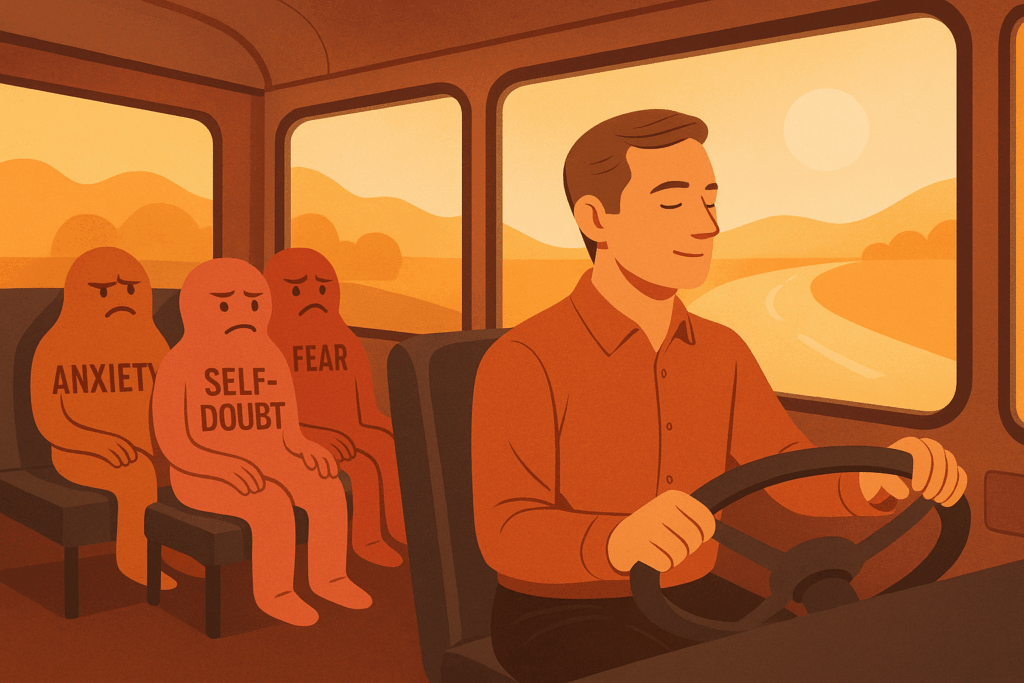What to Expect in Therapy

If you’re thinking about starting therapy, you might be wondering: How does it actually work? What do we do in sessions? What’s the point of talking about all this stuff?
This page gives you a sense of what therapy looks like with me — how we’ll make sense of your difficulties together, why it’s understandable you feel stuck, and what we’ll do to start creating change.
Making Sense of the Problem
In the early sessions, we start by understanding what’s brought you to therapy — whether it’s anxiety, low self-esteem, perfectionism, or that persistent sense of not being good enough. You might call it imposter syndrome, overthinking, burnout, or just feeling overwhelmed and stuck.
You don’t need to explain it perfectly — my role is to help you unpack it.
We’ll look at how your struggles show up across different areas of life: work, relationships, health, interests, and everyday responsibilities. And as we explore what’s going on, I’ll be listening for the patterns that might be keeping things stuck — patterns in how you think, respond, or cope.
For example, you might notice yourself constantly second-guessing decisions, pushing yourself to always do more, avoiding certain situations, or chasing reassurance just to feel okay. These strategies often make sense in the short term — they can reduce discomfort or help you get by — but over time they tend to keep the problem going.
Why Getting Stuck Makes Sense
One of the most important parts of therapy is making sense of why you’re stuck — and doing that in a way that’s compassionate, not critical.
I’ll often explain it like this: we all have a mind that’s designed to be a problem-solver. It’s constantly scanning for problems, trying to fix things, make sense of them, and keep us safe. And that’s really useful — most of the time.
If it’s too dark, we turn on a light. Too cold? We put on the heating. Don’t like the colour of a room? We paint it. Problem identified, solution applied.
But this becomes tricky when we apply the same mindset to our internal experiences — like anxiety, doubt, or not feeling good enough. The mind starts treating these feelings like problems to get rid of. So it pushes us to avoid, to overthink, to seek reassurance, to people-please or procrastinate — not because we’re weak or failing, but because our mind is trying to help.
Unfortunately, these “solutions” often become part of the problem. They work in the short term, but over time they leave us feeling smaller, more stuck, more frustrated.
The Trap of Trying Harder
Here’s where it gets even harder: when those strategies stop working, the mind doesn’t suggest a new plan — it just tells you to try harder at the same thing. Avoid more. Push more. Think more. Control more. And this is often what leads to burnout, increased anxiety, and more self-criticism.
A metaphor I use to explain this is digging out of a hole. You’re doing what seems logical — digging hard to get yourself out. But the more you dig, the deeper you go. And because you don’t have another tool, you keep reaching for the same one — the shovel — even though it’s making things worse.
This isn’t because you’re not trying hard enough. It’s because the strategy itself is the trap.
Learning to Relate to Your Experience Differently
So in therapy, we look at doing something different.
Rather than trying to get rid of or control difficult thoughts and feelings — like anxiety, doubt, or shame — we shift the focus. We start to learn how to have these experiences, without letting them run the show.
This isn’t about ignoring them or pretending they don’t exist. It’s about changing the relationship you have with them — so that you are in the driver’s seat, not your anxiety.
I often use the Passengers on the Bus metaphor to describe this. Imagine you’re driving a bus, and your difficult thoughts and feelings — like “You’re going to fail,” “You’re not good enough,” “You should quit while you’re ahead” — are passengers on board. They don’t want you to take certain turns, and they’ll try to shout you down.
You have a choice: you can pull over and let them take the wheel, or you can keep driving — with them in the backseat. They might shout, but they don’t get to decide where you go. And over time, the more you show them you’re in charge, the quieter they tend to get.
But they don’t get quieter by trying to silence them. That just keeps you locked in a battle. They get quieter when you stop struggling with them and start focusing on what matters to you.
Building a More Meaningful Life
So therapy isn’t just about understanding how you’re stuck — it’s about building something new.
We’ll work together to identify what kind of life you want to move toward, what matters to you, and what kind of person you want to be in the face of difficulty. And then we’ll start practising the skills and shifts in mindset that help you do that — even with doubt or discomfort present.
This work can be challenging at times — but it’s also incredibly freeing. It’s not about getting rid of who you are. It’s about loosening the grip of self-judgment and making space to live in a way that feels more true to you.
Ready to Take the Next Step?
You don’t need to be “therapy ready.” You just need to be willing to get curious about what’s going on — and open to doing things a little differently.
If this sounds like the kind of therapy you’ve been looking for, feel free to get in touch. I’m here when you’re ready.
